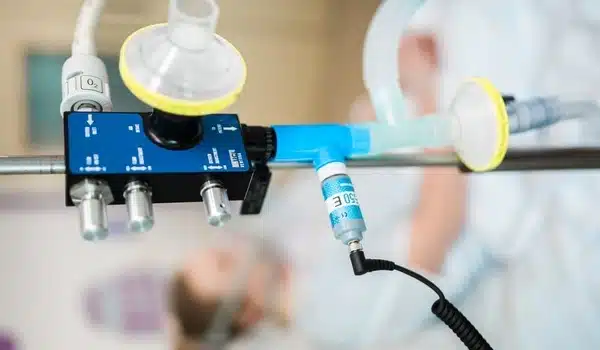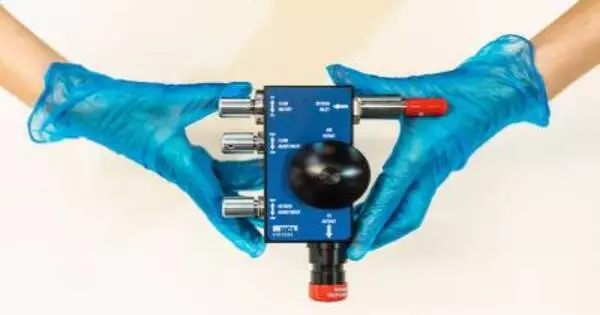Chronic obstructive pulmonary disease (COPD) affects one out of every ten adults (COPD). The development of a new breathing device by pulmonologists at the University of Cincinnati holds promise for improving their lives.
The new device not only improves COPD symptoms and quality of life, but it also helps people who are stressed or anxious, as well as those who practice mindfulness, meditation, or yoga.
The findings were reported in the journal Respiratory Care.
The device, called PEP Buddy, was created by Muhammad Ahsan Zafar, MD, and Ralph Panos, MD. Zafar is an associate professor in the Department of Pulmonary Critical Care and Sleep Medicine at the UC College of Medicine while Panos is a professor emeritus in pulmonary and critical care at the UC College of Medicine and is the director of national tele-ICU program for the U.S. Veterans Affairs.
We did a six-minute walk test with and without the device. They were given the device to use at home and in their daily lives. A two-week follow-up was conducted to determine how PEP Buddy use affected their shortness of breath and quality-of-life scores.
Muhammad Ahsan Zafar
“Dr. Panos and I both see COPD patients, and it’s a large population,” Zafar says. “When they are diagnosed with COPD, their lives are drastically altered. They used to be active people, but now they’re debilitated and limited, so we wanted to come up with something simple that would help them improve their lives.”
Due to tighter air tubes, it takes longer for COPD patients to expel inhaled air from their lungs with each breath. As a result, when they breathe quickly, such as during physical activities, air is retained in the lungs. This air stacking, also known as “dynamic hyperinflation,” is the primary cause of shortness of breath and lower oxygen levels. People become less active and more isolated as their breathing becomes more difficult during physical activity.
Panos and Zafar developed a hands-free device that is the size of a whistle. Zafar said he looked at positive-expiratory pressure (PEP) breathing devices on the market and they were handheld, big, and bulky, so they tried to come up with something that is very simple, lightweight, and easy to use. The device is designed to be worn around the neck with a lanyard for day-to-day use and inserted into the mouth when needed, during or after exertion.

They examined people with COPD who were short of breath and gave them two tasks in the study. “We did a six-minute walk test with and without the device,” Zafar explains. “They were given the device to use at home and in their daily lives. A two-week follow-up was conducted to determine how PEP Buddy use affected their shortness of breath and quality-of-life scores.”
According to the study, 72% of participants saw a significant improvement in their shortness of breath and overall quality of life. When using PEP Buddy, 36% of those who would drop their oxygen levels while walking did not drop their oxygen levels. This is the first mechanical device to have such an effect on oxygen levels in COPD patients.
Maja Flannery, who has chronic lung disease and an airflow obstruction, says the PEP Buddy has changed her way of life.
“I am so happy that I was lucky enough to be part of the study and able to use this great little device to breathe better,” Flannery says. “I use it when I get up in the morning. It helps with the air requirement when changing position from laying down to standing and exercises my lungs to get them more prepared for the day. I find it helpful in getting the trapped air out as I am active, so I can play longer points during tennis, and also recover between points more quickly. My friends at tennis laugh that it is my ‘magic whistle.'”
The next step in this research, according to UC’s Zafar, is to conduct a long-term study to see how it affects the use of rescue inhalers, emergency department visits, and long-term symptoms and functional capacity in people with COPD. PEP Buddy may also be a promising addition to pulmonary rehabilitation programs for accelerated improvement and long-term success. They are also looking into other applications for PEP Buddy in health care.
“As a physician, I am pleased that we are offering something novel that has the potential to improve people’s lives,” says Zafar. “That is where my heart is. These people are severely disabled, with few tools at their disposal to alleviate their symptoms. PEP Buddy will be one of these tools.”
















